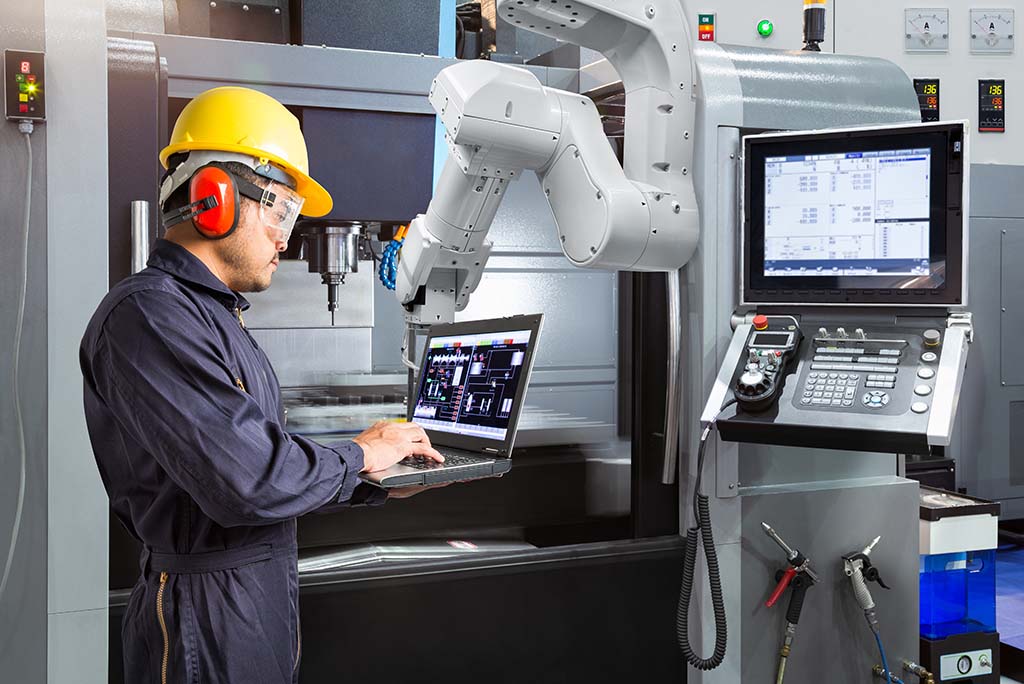Summary:
- HMIs are interfaces that allow humans to interact with machines. They act as a translator, facilitating communication and control.
- Benefits of HMIs include enhanced user experience, improved efficiency, increased safety, better decision-making, and reduced downtime.
- HMIs are used in various applications, from everyday devices like smartphones and ATMs to complex industrial systems in factories and healthcare.
- Key features of an HMI include an intuitive user interface, diverse input methods (touchscreens, buttons, etc.), and informative output devices (displays, alarms).
- The future of HMIs promises more integrated and personalized experiences with advancements in AI, AR/VR, and IoT.
We live in a world of screens, buttons, and voice commands. Every time you check your phone, adjust the thermostat, or use a self-checkout kiosk, you’re interacting with a machine. But have you ever stopped to think about the crucial element that bridges the gap between you and that technology? It’s called an HMI or Human Machine Interface.
Let’s explore the world of HMIs and how they work.
What is HMI?
Human Machine Interface (HMI) is a general term for any device or software that lets humans interact with and control machines. Think of it as a translator, facilitating a two-way exchange of information between you and a complex automated system.
HMIs are used in all kinds of applications, from everyday devices to advanced industrial systems. They come in many forms, like touchscreens, control panels, computer interfaces, and even voice-activated systems.
While people often use HMI and SCADA (Supervisory Control and Data Acquisition) interchangeably, they’re not quite the same. An HMI is usually a localized interface for interacting with a specific machine or process, while SCADA systems cover a broader scope, managing and monitoring multiple systems over a wider area.
Benefits of HMIs
HMIs provide a range of advantages across different fields:
- Enhanced User Experience: Simplify complex tasks with user-friendly interfaces, making technology easier to use.
- Improved Efficiency: Clear visuals and intuitive controls help streamline tasks and boost productivity.
- Increased Safety: Monitor critical parameters, send alerts, and enforce safety protocols to reduce errors and accidents.
- Better Decision-Making: Real-time data and analytics support smarter decisions and process optimization.
- Reduced Downtime: Enable quick troubleshooting and maintenance to keep operations running smoothly.
Examples of HMI
HMIs are all around us, shaping our interactions with technology in countless ways. Here are just a few examples of how HMIs are used across different industries:
Everyday Life
- Smartphones: The touchscreen on your phone is a perfect example of an HMI, letting you interact with a complex device using simple gestures, icons, and menus.
- ATMs: ATMs make banking easy with user-friendly interfaces, guiding you step-by-step with clear instructions and visual feedback.
Industrial Automation
- Factory Control Panels: HMIs in factories give operators real-time data on production lines, helping them monitor performance, adjust settings, and resolve issues.
- Robotic Interfaces: Used to program, control, and monitor industrial robots, HMIs make it easy to automate tasks with precision.
- Process Control Systems: In industries like oil and gas or chemical processing, HMIs let operators oversee and control complex processes, ensuring everything runs safely and efficiently.
Healthcare
- Medical Imaging Equipment: HMIs help control and display images from devices like X-rays, MRIs, and ultrasounds.
- Patient Monitoring Systems: In hospitals, they show vital signs, manage medication, and alert staff when needed.
Key Features of an HMI
HMIs come in many forms and serve a variety of purposes, but a few key features are crucial for ensuring smooth and efficient interaction between humans and machines:
Intuitive User Interface (UI)
An effective HMI puts user experience first by presenting information clearly and making it easy to understand. Key aspects of an intuitive UI include:
- Clear Visuals: Charts, graphs, and symbols help represent data and system status. These visuals should be simple to interpret and give a quick, clear overview.
- Easy Navigation: Menus and screens should be easy to navigate. A clean layout, logical flow, and quick search options make for a smooth user experience.
Diverse Input Methods
HMIs should be flexible in how users input commands or information, adapting to different situations with options such as:
- Touchscreens: A popular choice in modern HMIs, offering a direct and intuitive way to interact with the system.
- Keypads and Buttons: Provide tactile feedback and are often more reliable in certain environments.
- Other Input Devices: Tools like keyboards, barcode scanners, or voice recognition can be added to meet specific needs.
Informative Output Devices
HMIs need to clearly communicate information back to the user, using tools like:
- Displays: High-resolution screens are key for showing information, especially when detailed graphics or complex data visualizations are needed.
- Alarms and Indicators: Visual and audio alerts, like flashing lights or alarms, help highlight critical events or changes in the system.
- Data Logging and Reporting: Many HMIs can record data, generate reports, and export information for further analysis.

How HMI Works
At its core, an HMI creates a continuous loop of interaction between a human and a machine. This interaction can be broken down into three main stages:
1. Input
This is where the user initiates the interaction by providing input to the machine through the HMI. The method depends on the HMI design and the machine’s function, and common options include:
- Touching a screen: Selecting options, pressing buttons, or interacting with graphical elements.
- Using physical controls: Pressing buttons, flipping switches, or turning knobs.
- Entering data: Typing on a keyboard, scanning a barcode, or using voice commands.
2. Processing
Once the HMI receives the input, it converts it into a format the machine understands. This involves:
- Converting signals: Turning physical actions (like pressing a button) into digital signals.
- Interpreting commands: Figuring out what action the user wants to perform.
- Communicating with the machine: Sending the interpreted commands to the system or equipment.
3. Output
After the machine processes the input and completes the requested action, it sends feedback to the user via the HMI. Feedback can include:
- Visual feedback: Updating displays, changing colors, or showing animations.
- Auditory feedback: Playing sounds, alarms, or voice prompts.
- Physical feedback: Activating indicator lights or providing haptic signals.
This feedback lets the user monitor the system, confirm their input was processed, and make any necessary adjustments.
The Future of Human Machine Interaction
In today’s tech-driven world, HMIs are more than just interfaces—they’re the connection between humans and machines, making interaction and control seamless. From smartphones to complex industrial systems, HMIs are key to improving efficiency, productivity, and safety across industries.
As technology evolves, we can expect HMIs to become even smarter and more integrated. With advancements in AI, AR/VR, and IoT, the future of HMIs promises immersive and highly personalized experiences.
If you’re ready to take advantage of HMI technology for your industrial automation needs, the OAS Platform has you covered. With intuitive design tools and flexible architecture, OAS helps you build advanced HMIs that boost efficiency and streamline operations.
Ready to see it in action? Download the OAS Platform today and take your human-machine interactions to the next level.
